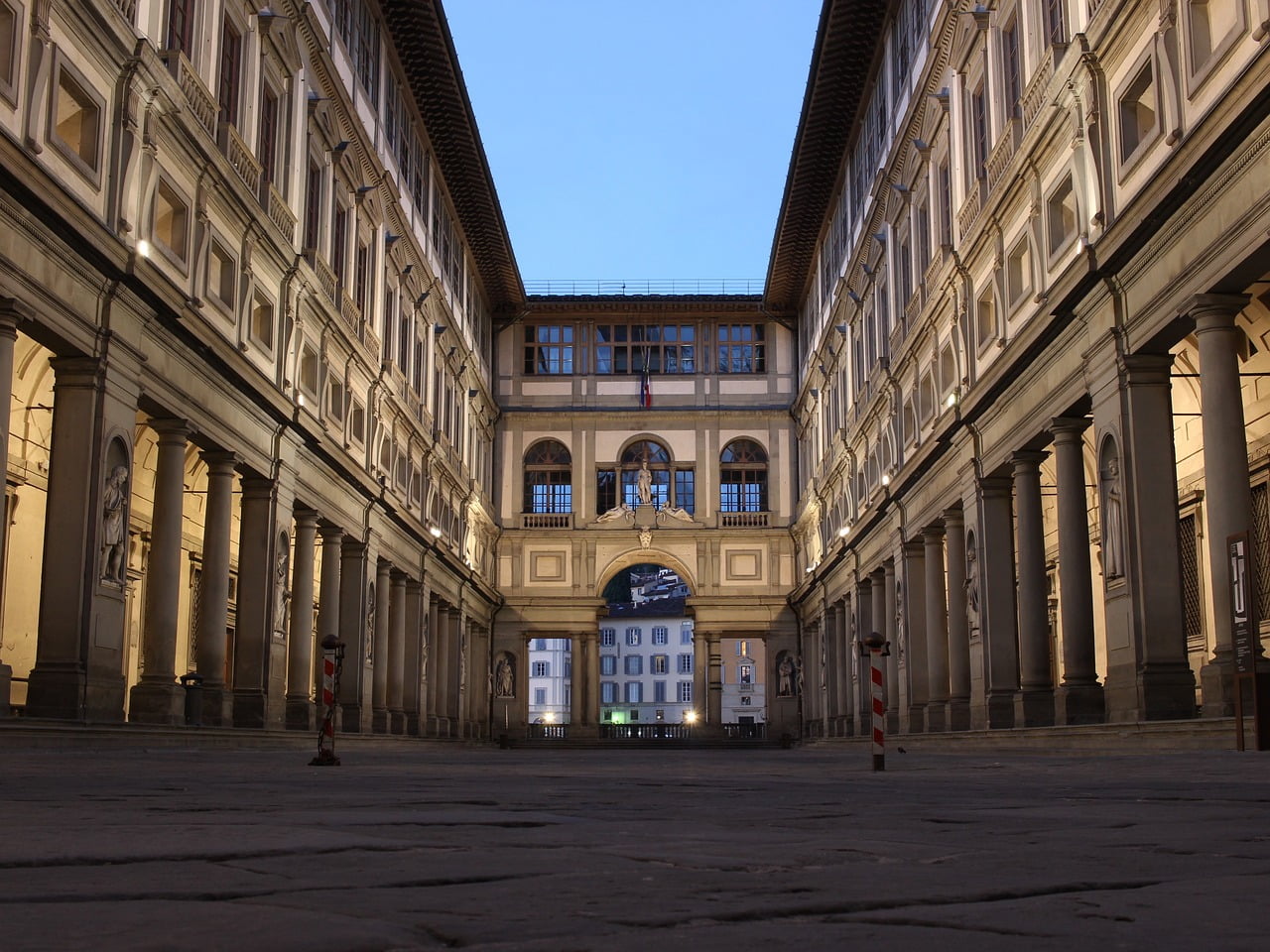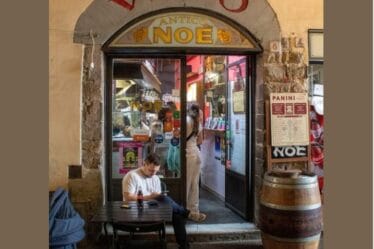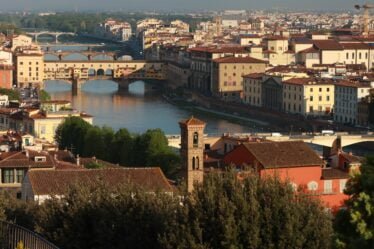

The Portrait of Agnolo Doni: A Masterpiece by Raphael
The Portrait of Agnolo Doni is an oil painting on wood by the Italian Renaissance master Raphael, executed around 1506. This remarkable artwork is currently housed in the Uffizi Gallery in Florence and is considered a key example of Raphael’s portraiture during his early period.
The Story Behind the Portrait of Agnolo Doni
The Portrait of Agnolo Doni is part of a pair of paintings that depict the wealthy Florentine merchant Agnolo Doni and his wife, Maddalena Strozzi. Their marriage took place in 1503, but Raphael likely painted these portraits in 1506, during a period when he was deeply influenced by the works of Leonardo da Vinci.
The composition of this portrait bears a striking resemblance to Leonardo’s Mona Lisa. The subject is depicted in a three-quarter view with his hands elegantly positioned on top of one another. However, unlike Leonardo’s dramatic and mysterious backgrounds, Raphael employs a lower horizon in the landscape, ensuring a softer, more harmonious balance between figure and background. This technique allows for a clearer and more uniform light, enhancing the depth and definition of the subject.
Artistic Characteristics and Innovations
One of the most distinguishing features of the Portrait of Agnolo Doni is the sense of serenity that pervades the composition. Unlike Leonardo’s portraits, which often contain an element of tension or ambiguity, Raphael’s work exudes calm and balance. The meticulous rendering of fabrics, jewels, and facial features showcases the artist’s ability to capture not only physical likeness but also the wealth and status of his subjects.
The attention to material details—such as the luxurious clothing and carefully crafted jewelry—emphasizes the prosperity of the Doni family. At the same time, every element in the painting, even those of secondary importance, contributes to a sense of precise compositional harmony.
Raphael Sanzio: The Master Behind the Painting
Raphael Sanzio (1483–1520) was one of the greatest artists of the Italian Renaissance, renowned for his exceptional skills in painting, composition, and perspective. Born in Urbino, he was influenced by early masters such as Perugino but soon developed his own distinctive style, characterized by grace, clarity, and idealized beauty.
By the time Raphael painted the Portrait of Agnolo Doni, he was beginning to establish himself as a leading figure in the Renaissance art scene. This period marked his artistic maturity, during which he combined the naturalism of Leonardo da Vinci with the structural clarity of classical art. His ability to convey both elegance and psychological depth in his portraits set him apart from his contemporaries.
The Legacy of the Portrait of Agnolo Doni
The Portrait of Agnolo Doni and its companion piece, the Portrait of Maddalena Doni, remain significant works in Raphael’s oeuvre. These paintings illustrate his mastery in portraiture and his ability to create a sense of lifelike presence within his subjects. They also reflect the refined tastes of Florence’s elite during the early 16th century.
Today, the Portrait of Agnolo Doni is preserved in the Uffizi Gallery, where it continues to be admired by art lovers and historians alike. Visitors to the museum can witness firsthand the exquisite details and artistic brilliance that make this portrait one of the most celebrated works of the High Renaissance.
For more information, visit the Uffizi Gallery’s official page: Uffizi Gallery – Portrait of Agnolo Doni.



